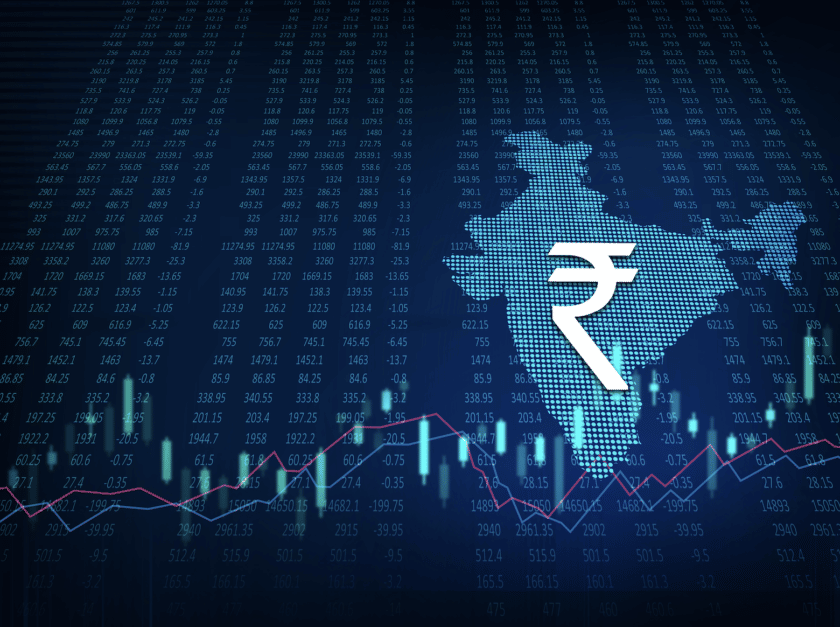Darius McDermott, managing director, FundCalibre, looks at the prospects for the one original BRIC market that seems to be doing well in the current global economic environment.
It seems India can do no wrong at the moment. It has replaced the UK as the world’s fifth largest economy (it is forecast to be the second largest by 2075)*; and recently became the first country to land a spacecraft on the south pole of the moon. It has also hosted the G20 in September and is currently hosting the Cricket World Cup which, as of writing, its team is favourite to win.
Only last month, India’s Nifty 50 hit a lifetime high on the back of a record-setting rally powered by local investors**. It’s a stark contrast from the nation inherited by Prime Minister Narendra Modi and his government back in 2014. India now has a raft of tailwinds for economic and corporate growth, such as positive government policies, ideal demographics, urbanisation accelerating, and an increasing middle-class consumer base.
The trouble is, the investment world has spotted the trend, which means valuations are markedly higher than other emerging markets. Indian equities currently trade at a 22 per cent premium to their long-term average over the past 17 years***.
However, while India does have some challenges, they pale in comparison to some of its peers, perhaps justifying the premium. For example, the likes of China and Korea face long-term demographic and corporate governance issues.
In its latest World Economic Outlook report, the International Monetary Fund has projected GDP growth in India of 6.1 per cent next year, well ahead of anything in the developed/emerging world****.
UTI India Dynamic Equity manager Ajay Tyagi says valuations reflect the sustainability of growth in India – which continues to drive P/E multiples.
He says: “We are not looking for businesses which are trading at 70-80 cents to the dollar. We are more than happy buying a business worth a dollar, because the framework in India is those businesses can grow their intrinsic value from $1 to $2, or maybe $5 in a few years. Even if we pay a fair price for them, this intrinsic value increase will take care of our returns over our holding period.*****”
Diversity a key to Indian growth story
One of the benefits for India has been the ability to keep inflation under control. Savings levels are low in a number of areas, which meant when the economy opened up post-Covid, people immediately showed up for work.
Jupiter’s Avinash Vazirani says the Indian government did not do the ‘helicopter drop’ of money into the system and that’s contributed to a comparative lack of inflationary pressure. He says: “In the midst of that, company profits have been growing quite rapidly coming out of Covid, as evidenced by advance tax numbers (in India, people and business pay tax quarterly in advance) for September, which are 20 per cent higher than last year’s.^”
There are other reasons which support the potential for long-term growth. For example, India’s dependency ratio (the ratio between its working-age population and its number of children and elderly) is one of the lowest among regional economies*.
Goldman Sachs says India has a great window of opportunity to improve manufacturing capacity, grow services and improve its infrastructure. However, it says the main challenge to this is India’s labour force participation rate – which has declined over the past 15 years – adding that shoring this up by improving the women’s labour force participation rate for example, can further increase growth*.
The rise of the digital economy should also bolster corporate returns. The digital economy is already responsible for 22 per cent of India’s output. The roll out of 5G networks is a further catalyst, with the digital economy expected to expand six-fold to $1 trillion by 2030^^.
The move by many companies to a ‘China plus one’ manufacturing capacity, will support many EMs in the region, including India. For example, Apple products are now assembled in India, as the government demands to have manufacturing facilities in their country of sale^^^.
The final point is participation in the equity market. Not only has there been a trend of domestic investors moving some assets out of fixed deposits and into the equity market (we saw around a 10 per cent swing at one point in 2022), but we’ve also seen some $16 billion of foreign inflows in 2023^^^^. However, foreign investor allocations to the region still remain below the weighting of the MSCI Emerging Market benchmark index in the past two years^^.
The price of oil could be the biggest threat. India is a major oil importer, so should the price of a barrel go to $150-175 it would pose challenges^^^^. However, the central bank is sat on huge cash reserves, which mitigate the threat to a degree.
I think the key to India’s growth story is the diversity of its growth, be it corporate, infrastructure or demographics. It also has stable politics – something which is unlikely to change as we head into an election in 2024. Although valuations look stretched in the short term, you are paying a premium for the security India offers compared with its emerging market peers long term.
The all-weather fund
Backed by a well-resourced and experienced team, the Goldman Sachs India Equity Portfolio targets businesses of all sizes when building its 70-90-stock portfolio. The team’s ability to meet companies in India differentiates it from many in its peer group.
Sustainable route
The team behind FSSA Global Emerging Markets Focus tries to ignore the day-to-day volatility of the stock market and focuses on owning good quality businesses with strong balance sheets which will ultimately do well over time. The portfolio is highly concentrated, with around 35 large to medium-sized companies, and has historically offered a good degree of protection to investors in volatile periods. The fund currently has 29 per cent invested in India^^^^^.
Small-caps and tapping into the domestic story
The Federated Hermes Global Emerging Markets SMID Equity fund targets a high single-digit return per annum over the longer-term of 5-10 years. To achieve this, the manager looks for quality companies that are exhibiting compound growth and that earn more than their cost of capital over the long term. The fund currently has its largest country exposure in India (21 per cent)^^^^^.
Past performance is not a reliable guide to future returns. You may not get back the amount originally invested, and tax rules can change over time. Darius’s views are his own and do not constitute financial advice.
*Source: Goldman Sachs, How India could rise to the world’s second-biggest economy, July 2023
**Source: Reuters, September 2023
***Source: UTI International, data at 5 September 2023
****Source: International Monetary Fund, World Economic Outlook, July 2023
*****Source: UTI International, July 2023
^Source: Jupiter, Notes from the Investment Floor: What’s driving India’s momentum?, September 2023
^^Source: Pictet Asset Management, A new dawn for Indian stocks, September 2023
^^^Source: Aubrey Capital Management, Why India is 40% of our portfolio, September 2023
^^^^Source: FSSA, June 2022
^^^^^Source: Fund factsheet, 31 August 2023
































